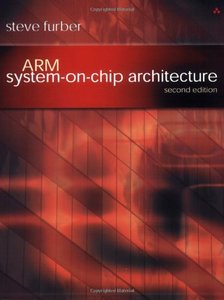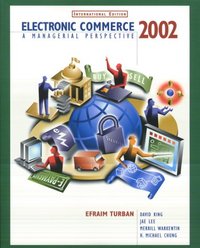Metro Area Networking
暫譯: 都市區域網路
Kenneth W. Houp, Thomas E. Pearsall, Elizabeth Tebeaux, Sam Dragga
- 出版商: McGraw-Hill Education
- 出版日期: 2002-10-23
- 售價: $2,230
- 貴賓價: 9.5 折 $2,119
- 語言: 英文
- 頁數: 640
- 裝訂: Paperback
- ISBN: 0195178793
- ISBN-13: 9780071399142
-
相關分類:
Computer-networks
海外代購書籍(需單獨結帳)
買這商品的人也買了...
-
 TCP/IP Illustrated, Volume 2: The Implementation (Hardcover)
TCP/IP Illustrated, Volume 2: The Implementation (Hardcover)$1,230$1,205 -
 Introduction to the Theory of Computation
Introduction to the Theory of Computation$700$686 -
 Advanced Compiler Design and Implementation (Hardcover)
Advanced Compiler Design and Implementation (Hardcover)$1,000$980 -
 ARM System-on-Chip Architecture, 2/e ( 美國原版)
ARM System-on-Chip Architecture, 2/e ( 美國原版)$2,730$2,594 -
 Project Management, 7/e
Project Management, 7/e$1,080$1,058 -
 Modern C++ Design: Generic Programming and Design Patterns Applied (Paperback)
Modern C++ Design: Generic Programming and Design Patterns Applied (Paperback)$2,480$2,356 -
 Applied Data Communications: A Business-Oriented Approach, 3/e
Applied Data Communications: A Business-Oriented Approach, 3/e$1,000$950 -
 Java How to Program, 4/e
Java How to Program, 4/e$1,100$1,078 -
 C++ Network Programming Volume 1
C++ Network Programming Volume 1$2,120$2,014 -
 Numerical Methods Using Matlab, 3/e (平裝) (美國版0132700425)
Numerical Methods Using Matlab, 3/e (平裝) (美國版0132700425)$870$853 -
 Web Content Mining with Java: Techniques for Exploiting the World's Biggest Info
Web Content Mining with Java: Techniques for Exploiting the World's Biggest Info$1,100$1,078 -
 $699Java Enterprise in a Nutshell, 2/e (Paperback)
$699Java Enterprise in a Nutshell, 2/e (Paperback) -
 DSP Applications Using C and the TMS320C6x (Hardcover)
DSP Applications Using C and the TMS320C6x (Hardcover)$1,200$1,176 -
 $825Practical VoIP Using VOCAL (Paperback)
$825Practical VoIP Using VOCAL (Paperback) -
 The Intel Microprocessors 8086/8088, 80186/80188, 80286, 80386, 80486, 6/e
The Intel Microprocessors 8086/8088, 80186/80188, 80286, 80386, 80486, 6/e$1,050$1,029 -
 SCWCD Exam Study Kit: Java Web Component Developer Certification (Paperback)
SCWCD Exam Study Kit: Java Web Component Developer Certification (Paperback)$1,650$1,568 -
 Operating System Concepts, 6/e (Windows XP Update)
Operating System Concepts, 6/e (Windows XP Update)$1,050$1,029 -
 Electronic Commerce 2002: A Managerial Perspective, 2/e (IE-Paperback)
Electronic Commerce 2002: A Managerial Perspective, 2/e (IE-Paperback)$820$199 -
 Red Hat Linux Internet Server
Red Hat Linux Internet Server$1,840$1,748 -
 Programming the Microsoft Windows Driver Model, 2/e (Paperback)
Programming the Microsoft Windows Driver Model, 2/e (Paperback)$2,270$2,157 -
 Programming Jakarta Struts
Programming Jakarta Struts$1,510$1,435 -
 Digital Video and HDTV Algorithms and Interfaces
Digital Video and HDTV Algorithms and Interfaces$1,500$1,470 -
 Carrier Grade Voice Over IP, 2/e (IE-Paperback)
Carrier Grade Voice Over IP, 2/e (IE-Paperback)$1,060$1,039 -
 Java Swing, 2/e
Java Swing, 2/e$2,100$1,995 -
 Peter Norton's Introduction to Computers, 5/e (Paperback)
Peter Norton's Introduction to Computers, 5/e (Paperback)$1,050$1,029
相關主題
商品描述
Steven Shepard lays bare the tricks and traps awaiting service providers in the metro area space, detailing the technological challenges and opportunities in his trademark lucid, humorous prose.
Contents
Acknowledgments
Introduction
PART
1: A LESSON IN MEDIEVAL HISTORY
The Evolution of Modern
Networks
Further Diversification
Core Versus Edge: A Few Words
The Birth of
Metro
Fiber Distributed Data Interface
(FDDI)
Switched Multimegabit Data Service
(SMDS)
The Maturing Metro Market
Metro Market Segments
Carrier-Class
Ethernet
MPLS/GMPLS-Enabled
Networks
DWDM
The Next-Generation
Intelligent Network
Network
Management
An Aside: Resilient Packet Ring
(RPR)
Anatomy of the Metro Network: The
Edge
The Multiservice Metro
Network
Network Inversion
Ciscos
Central Role
The Metro Network:
Access
Anatomy of the Metro Network: The
Core
Optical Burst Switching
Freespace Optics
synchronous Transfer Mode
(ATM)
Metro Topologies
Point-to-Point Architectures
Ring
Architectures
Summary
PART 2: THE METRO
NETWORK
What is a Metro Network?
Metro Touch Points
Long-Haul
Networks
Access Networks
The Metro
Area Itself
The Evolving Metro
Network
Metro Demographics
Regulatory Impacts
Likely Regulatory
Solutions
Summary
PART 3: ENABLING
TECHNOLOGIES
Introduction
Overview
and Terminology
Ethernet Services
Ethernet: A Brief History
Phase Two: Xerox and
DEC
The Arrival of Fast Ethernet
Full-Duplex Ethernet
Up the Stack: The Ethernet Physical
Layer
The Arrival of Fast Ethernet
(100BaseT)
One Step Up: Gigabit Ethernet
(1000BaseT)
10-Gigabit Ethernet
Ethernet Summary
Service Providers
Alternative Premises Schemes
Access
Technologies
Marketplace Realities
ISDN
Digital Subscriber Line (DSL)
Cable-Based Access Technologies
Wireless Access
Technologies
Transport
Technologies
Asynchronous Transfer Mode
(ATM)
Optical Networking
Putting
It All Together
Fiber
Nonlinearities
Intermodulation
Effects
Optical Amplification
Optical Receivers
Dense Wavelength: Division
Multiplexing (DWDM)
Course Wavelength Division
Multiplexing (CWDM)
Optical Switching and
Routing
Switching Versus Routing: Whats the
Difference?
Switching in the Optical
Domain
Multipoint Circuit Support
Nonintrusive Monitoring
New
Services
Transporting Subrate Payloads: Virtual
Tributaries
SDH Nomenclature
Metro
Networking: SONET and Ethernet
Summary
PART 4: METRO APPLICATIONS
Corporate
Evolution
The Importance of Corporate
Knowledge
The ERP Process
Data
Mining
Knowledge Management
Obstacles to Effective Knowledge Management
&nb
商品描述(中文翻譯)
在2001年,都市區的寬頻被證明是電信業的一個亮點——如果無法通過都市瓶頸傳輸數據,世界上所有的長途骨幹容量也無濟於事。然而,服務提供商正在面對各種技術選擇的掙扎(SONET?DWDM?以太網?即將到來的10Gig以太網?),同時也面臨輕鬆有效地訪問SAN和VPN的挑戰。服務質量問題對於招募和維持客戶至關重要。
Steven Shepard 揭示了服務提供商在都市區域面臨的各種技巧和陷阱,詳細說明了技術挑戰和機會,以他標誌性的清晰幽默的文筆呈現。
目錄
- 致謝
- 介紹
- 第一部分:中世紀歷史的教訓
- 現代網絡的演變
- 進一步的多樣化
- 核心與邊緣:幾句話
- 都市的誕生
- 光纖分佈數據介面 (FDDI)
- 交換式多兆位數據服務 (SMDS)
- 成熟的都市市場
- 都市市場細分
- 運營商級以太網
- MPLS/GMPLS啟用的網絡
- DWDM
- 下一代智能網絡
- 網絡管理
- 附註:彈性數據包環 (RPR)
- 都市網絡的解剖:邊緣
- 多服務都市網絡
- 網絡反轉
- Cisco的核心角色
- 都市網絡:接入
- 都市網絡的解剖:核心
- 光學突發切換
- 自由空間光學
- 同步傳輸模式 (ATM)
- 都市拓撲
- 點對點架構
- 環形架構
- 總結
- 第二部分:都市網絡
- 什麼是都市網絡?
- 都市接觸點
- 長途網絡
- 接入網絡
- 都市區域本身
- 演變中的都市網絡
- 都市人口統計
- 監管影響
- 可能的監管解決方案
- 總結
- 第三部分:啟用技術
- 介紹
- 概述與術語
- 以太網服務
- 以太網:簡史
- 第二階段:Xerox和DEC
- 快速以太網的到來
- 全雙工以太網
- 向上堆疊:以太網物理層
- 快速以太網 (100BaseT) 的到來
- 更進一步:千兆以太網 (1000BaseT)
- 10-Gigabit以太網
- 以太網總結
- 服務提供商
- 替代的場地方案
- 接入技術
- 市場現實
- ISDN
- 數位用戶線 (DSL)
- 基於電纜的接入技術
- 無線接入技術
- 傳輸技術
- 異步傳輸模式 (ATM)
- 光學網絡
- 整合所有技術
- 光纖非線性
- 互調效應
- 光學放大
- 光學接收器
- 密集波長分割多工 (DWDM)
- 粗波長分割多工 (CWDM)
- 光學切換與路由
- 切換與路由:有什麼不同?
- 在光學領域的切換
- 多點電路支持
- 非侵入式監控
- 新服務
- 傳輸子速率有效載荷:虛擬支路
- SDH命名法
- 都市網絡:SONET和以太網
- 總結
- 第四部分:都市應用
- 企業演變
- 企業知識的重要性
- ERP過程
- 數據挖掘
- 知識管理
- 有效知識管理的障礙












